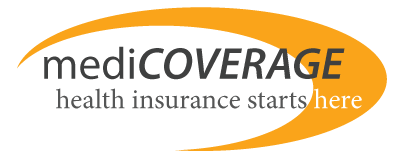Health Insurance for individuals and Families
Health Insurance Glossary
There are very few industries in the world that use more jargon than the health insurance industry. Here is a quick list of key terms that will help you understand your application and policy benefit forms. One big issue that most people want to know about is what is an HMO and What is a PPO. The video below does a good job of explaining the difference although as PPOs are often not more expensive than HMOs as the video suggests.
Co-Insurance
The percentage of fees you split with your health insurance company. So for example if you need surgery and your co-insurance is 20%, your insurance company will pay for 80% of the operation and you will pay the remaining 20%. Co-insurance usually starts to apply only after you meet your deductible for a given calendar year. Co-insurance is explored in detail in our health insurance research page
Co-Pay
The dollar amount that some plans require you to pay toward the cost of certain medical services. Not every insurance plan has a co-pay. For example, some plans may require that you pay a flat fee of $20 each time you visit a doctor. Usually your co-pays do not count toward the payoff of your deductible.
Deductible
The amount of money that you will have have to pay first, before your health insurance company will start paying toward your bills. For example, if you have a $500 deductible and you wind up in the hospital to get that rusty nail taken out of your shin, you’ll have to pay the first $500 toward your hospital bills. Then the health insurance company will pay the remaining balance. In most cases you will not be required to pay the deductible on the spot, but will be billed later. Deductibles typically reset each calendar year.
HIPAA
HIPAA stands for the Health Insurance Portability and Accountability Act. It is Federal legislation that was enacted in 1996 to do two things: 1) protect workers when they change or lose their jobs and 2) establish national standards for electronic health care transactions and national identifiers for providers, health insurance plans, and employers. Part 2 was originally intended to help people keep their information private, however in practice it is normal for providers and health insurance plans to require the waiver of HIPAA rights as a condition of service.
Health Maintenance Organization (HMO)
An alternative to commercial insurance that stresses preventive care, early diagnosis and treatment on an outpatient basis. HMOs are licensed by the state to provide care for enrollees by contracting with specific health care providers to provide specified benefits. Many HMOs require enrollees to see a particular primary care physician (PCP) who will refer them to a specialist if deemed necessary. Make sure you watch the video about to learn more.
Network
A group of doctors, hospitals and other providers contracted to provide services to insured individuals for less than their usual fees. Provider networks can cover large geographic markets and/or a wide range of health care services. If a health plan uses a preferred provider network, insured individuals typically pay less for using a network provider.
Out-of-Network
Describes a provider or health care facility which is not part of a health plan’s network. Insured individuals usually pay more when using an out-of-network provider, if the plan uses a network.
Out-of-Pocket Maximum
The amount of expenses incurred by an individual, above which which the plan pays 100% of covered expenses. Amounts in excess of scheduled allowances and other non-covered expenses do not count toward the out of pocket maximum. Family out of pocket maximums can be aggregate (the total expenses by all family members added together) or separate (a certain number of family members must reach their individual out of pocket maximum to initiate the benefit). Quotes display family aggregate out of pocket maximums as a fixed dollar amount and separate out of pocket maximums as the number of out of pocket maximums required per family. Deductibles are included in the out of pocket maximum.
Preferred Provider Organization (PPO)
A network or panel of physicians and hospitals that agrees to discount its normal fees in exchange for a high volume of patients. The insured individual can choose from among the physicians on the panel. This is the most popular type of health insurance available and is featured in the video above. While initially more expensive, PPOs now often cost less than HMOs.
Schedule of Allowable Charges
Pre-determined amount the carrier will pay for services provided by non-contracted provider. Generally carriers set the allowable fee schedule at the same level as the negotiated rate for contracting providers. Since there is no contractual obligation on the part of non-contracting providers to accept the fee schedule, the customer is responsible for all charges in excess of the schedule.
Short-Term Medical
Temporary health coverage for an individual for a short period of time, usually from 30 days to six months. Medicoverage never recommends short-term health insurance.
Next Steps?If you really have reviewed all the jargon, you are ready to get an insurance quote. Just scroll up to the top of the page and put in your zip. No personal contact information is required to get a quote and compare plans.
